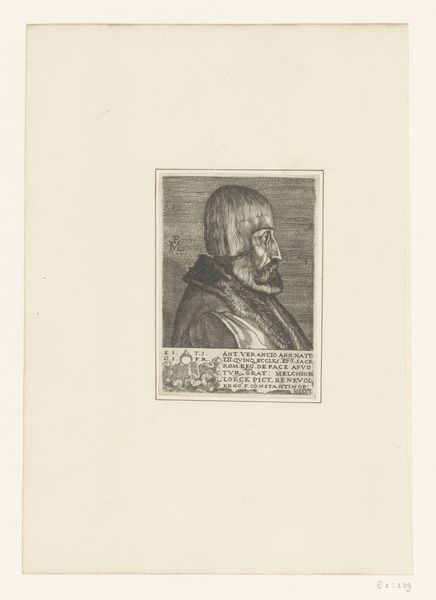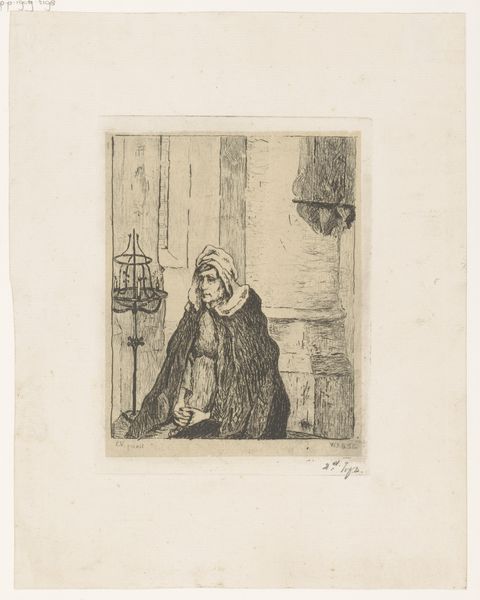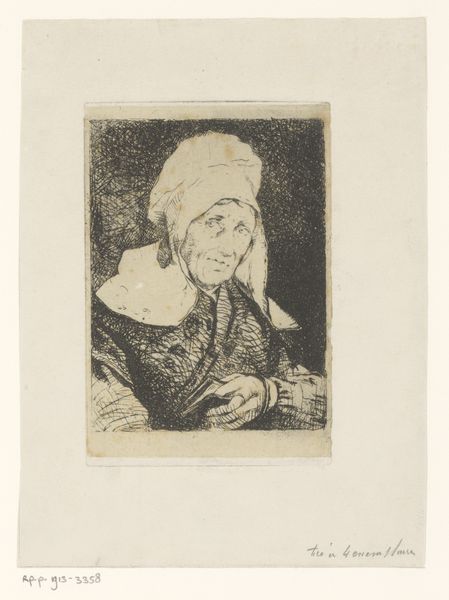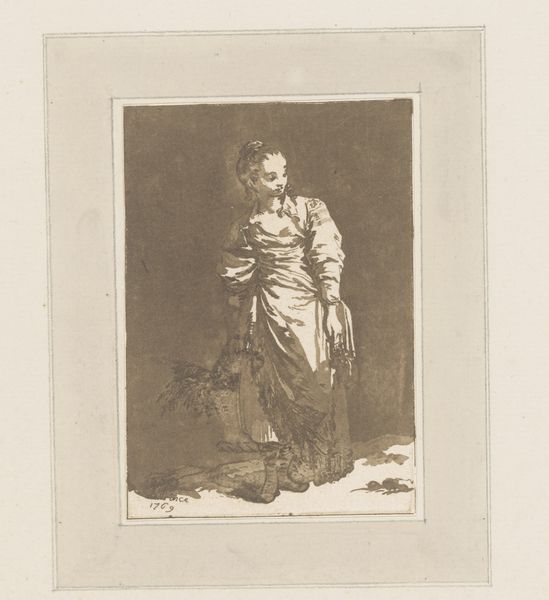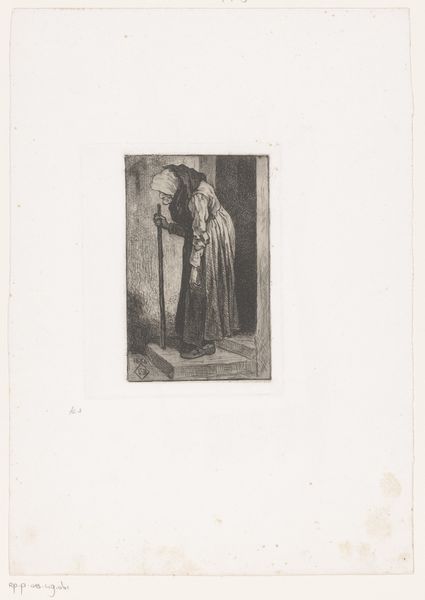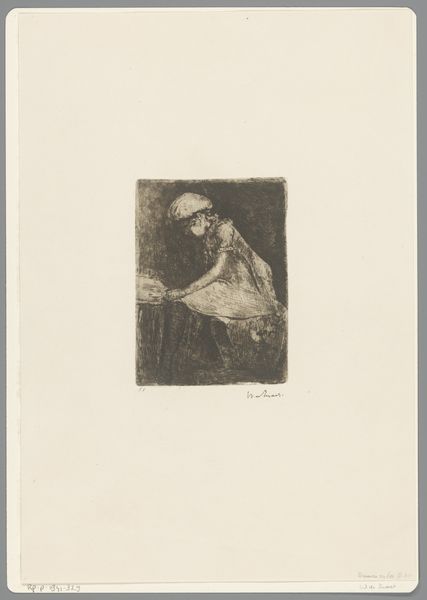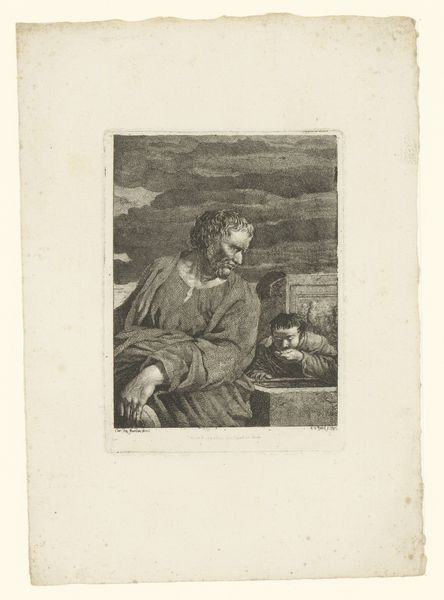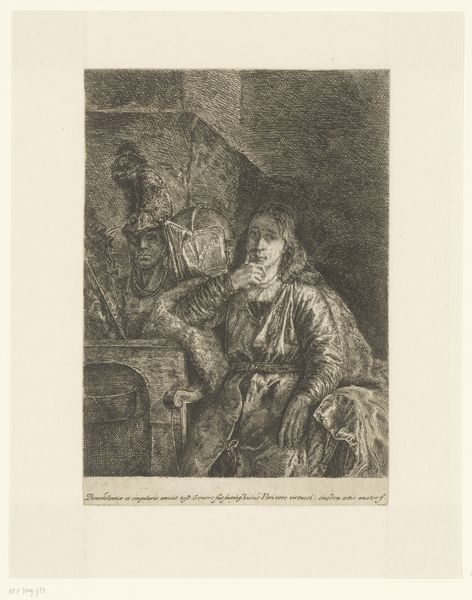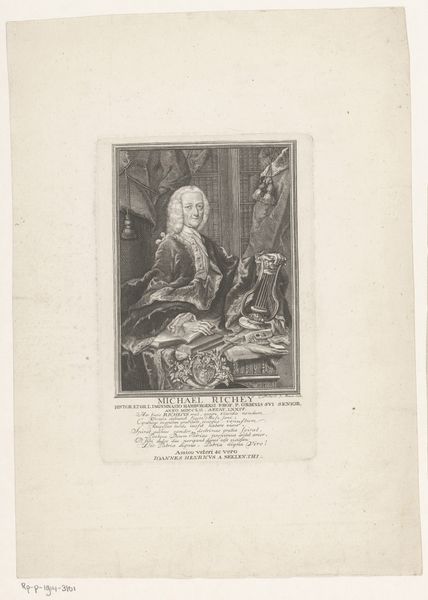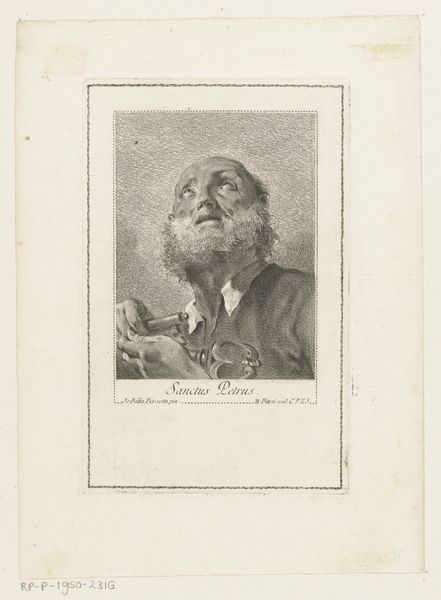
drawing, paper, ink
#
portrait
#
photo of handprinted image
#
drawing
#
ink paper printed
#
paper
#
ink
#
genre-painting
#
realism
Dimensions: height 175 mm, width 130 mm
Copyright: Rijks Museum: Open Domain
Curator: Johannes Driesch created this ink drawing on paper, entitled "Oude zittende man," around 1923. It depicts an elderly, seated man. What strikes you most about this image? Editor: It’s wonderfully shadowy, isn’t it? Like peering into a corner of someone's memory. The light from that little window—it's almost like a spotlight on his weathered face. He looks so deeply… weary. Curator: That "weariness," as you call it, is indeed palpable. Consider the social climate in Germany during the Weimar Republic. This piece, done in a realism style, brings forth some themes related to class and representation of elderly people. How does it echo, or perhaps challenge, notions of aging during that time? Editor: Well, he's got this… sadness, yes, but also an undeniable dignity, wouldn't you say? The way he holds his hands – there's a quiet strength in it. Almost like he's weathered a storm. It isn’t romanticized poverty; it feels… authentic. It reminds me a little bit of some Käthe Kollwitz works from the same time, but more contained. Curator: Interesting comparison. Kollwitz often highlighted working-class struggles, frequently portraying women in roles of protest. Do you feel Driesch is doing the same with older men here? Highlighting their social difficulties? Editor: Perhaps not a direct "protest," no. More like… a witness. He's acknowledging the man's existence, giving him space, weight. Even the dark background pushes him forward; we *have* to see him. There is an honesty here that refuses to let him become invisible. And the medium itself! The scratchy ink, the rough paper... everything speaks of austerity. Curator: A tangible representation of their material conditions. That's well observed. In this reading, one could certainly see his choice of realism as an advocacy. To render his subject, without beautification, as worthy of contemplation, indeed is very potent in its context. Editor: Exactly! And that’s what gets to me. No grand statements, just this incredibly textured portrait. It makes you think about all the unspoken stories, you know? It almost dares you to create a story. A little melancholic gem, this one. Curator: Precisely. It allows us to think of art not merely as an object, but as an ongoing dialogue, echoing long after its creation. Editor: A quiet but resounding one.
Comments
No comments
Be the first to comment and join the conversation on the ultimate creative platform.
